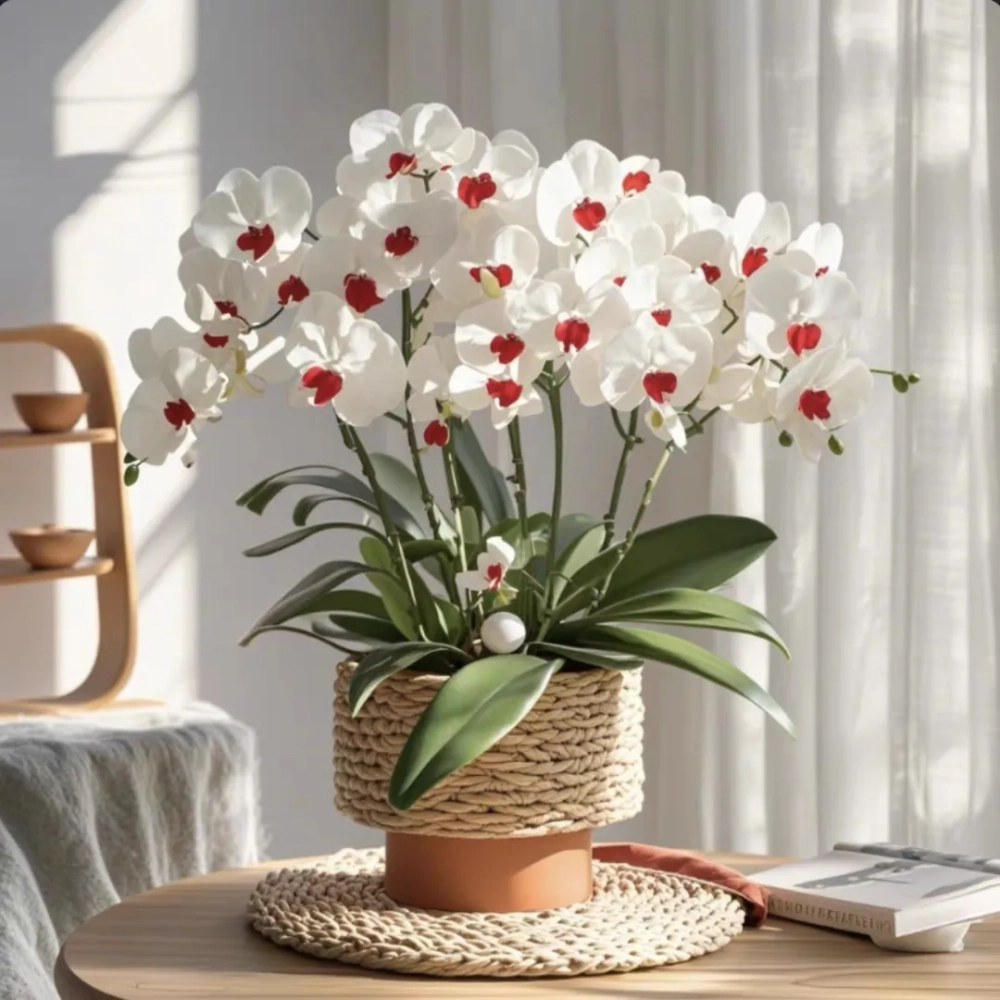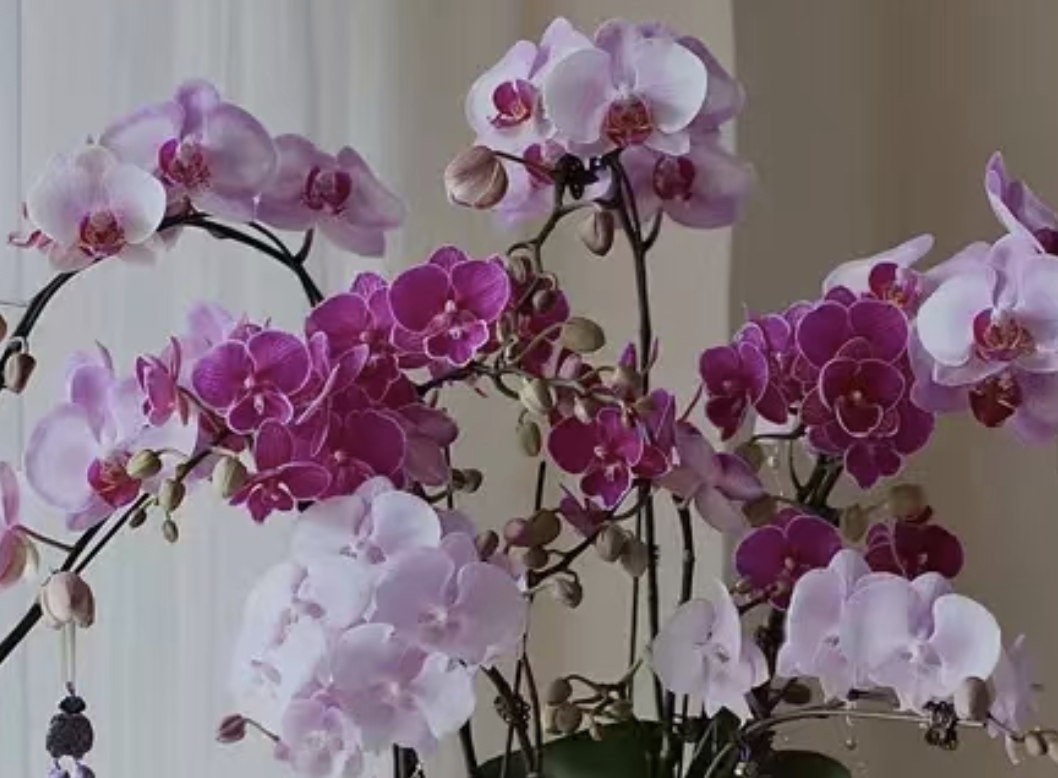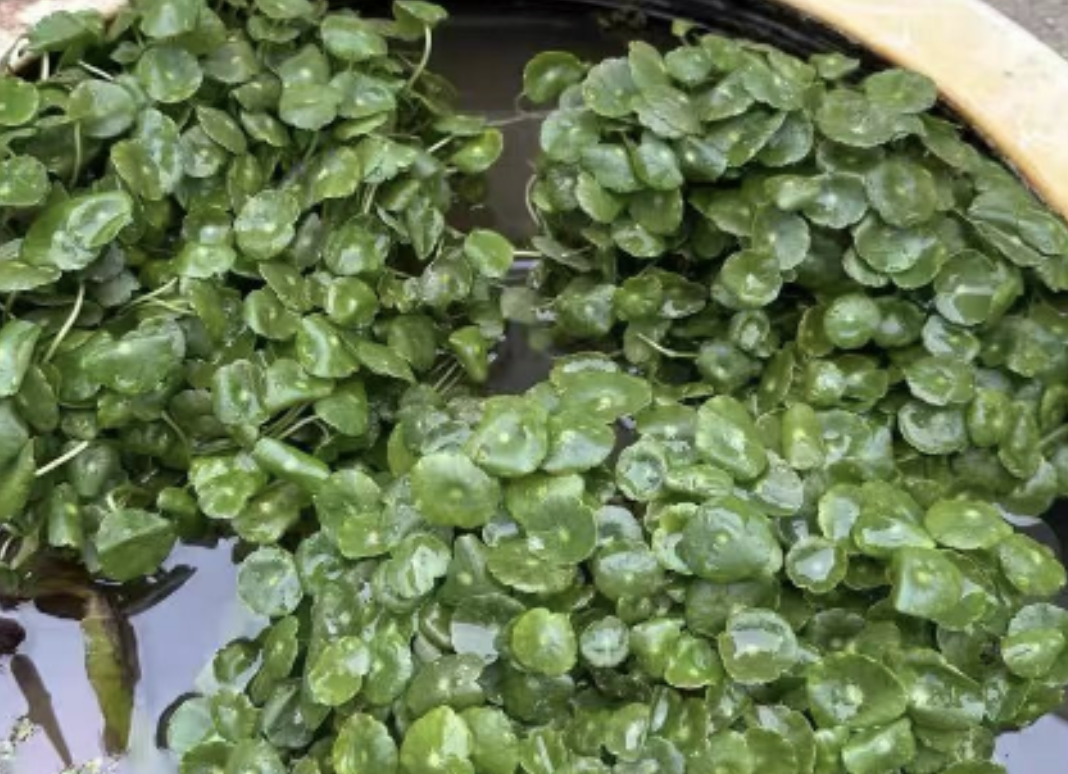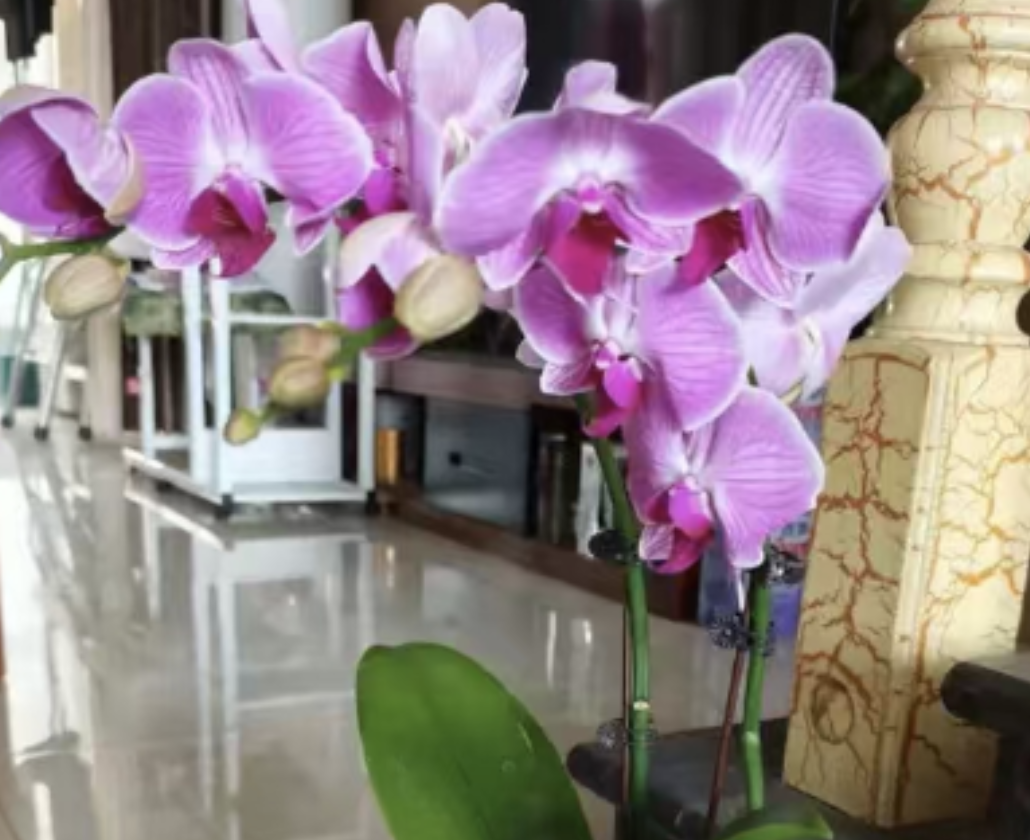Today, I'd like to share with you the 4 main causes of yellowing leaves in water-cultured Phalaenopsis and targeted solutions to make your Phalaenopsis green and lush again.
### Cause 1: Excessively High Temperature
The optimal growth temperature for Phalaenopsis is 15-25℃. Once the ambient temperature exceeds 30℃ for a long time, the leaves are prone to "yellowing due to stuffiness". Especially for water-cultured Phalaenopsis, whose roots are directly soaked in water, high temperatures will make the water heat up faster, blocking root respiration. The leaves will first send out signals—yellowing starts from the leaf tips and gradually spreads to the middle of the leaves, feeling soft and lacking toughness. In severe cases, the entire plant will wilt.
**Solution**: Immediately move it to a cool and well-ventilated place, away from high-temperature environments such as heaters, air conditioner vents, and direct sunlight areas on the balcony. In summer, you can place a basin of clear water around the flowerpot or spray water around the leaves with a spray bottle (do not spray on the petals) to cool down through evaporation. If possible, put up a thin sunshade net, which can block strong light and reduce temperature, keeping the ambient temperature stable below 30℃.
### Cause 2: Too Strong Light
Phalaenopsis originally grows under the shade of tropical rainforests and is accustomed to scattered light environments. Intense direct light (especially noon sunlight) can burn the leaves, causing irregular yellow spots or yellowing and withering of leaf edges. In severe cases, the leaves will lose their luster, become thin and brittle, or even wither entirely.
**Solution**: Timely adjust the placement position, move it to a window with a screen curtain for filtering, or an indoor scattered light area 1-2 meters away from the window. Check the state of the leaves: slightly sunburned yellow leaves do not need to be cut off to avoid secondary damage; severely withered leaves can be gently cut off from the base to reduce nutrient consumption. Remember the "golden rule of light": 3-4 hours of scattered light every day is enough. The soft morning sun is acceptable, but shade must be provided at noon and afternoon.
### Cause 3: Pests and Diseases
Water-cultured Phalaenopsis, due to the high environmental humidity, are easily targeted by pests and diseases, the most common being red spiders and scale insects. Red spiders hide on the back of leaves and suck sap with their piercing-sucking mouthparts, causing dense yellow-white spots on the leaves that gradually merge into yellow patches. Scale insects attach to the leaves and secrete mucus, leading to yellowing and withering of leaves, and may also cause mold infections.
**Solution**: Regularly check the back of leaves and leaf cores. Once pests are found, isolate the plant immediately to avoid infecting other plants. For a small number of pests, gently wipe the leaves with a cotton swab dipped in clean water or soapy water to remove the insects and their secretions. In case of severe infestation, use a Phalaenopsis-specific insecticide (such as Huahuashen) diluted according to the instructions, and spray both sides of the leaves and around the roots. Ensure ventilation to allow the pesticide to volatilize. Usually, open windows for more ventilation to keep air circulating, and promptly clean up fallen leaves and withered flowers to eliminate living space for pests and diseases.
### Cause 4: Normal Metabolism
Not all yellow leaves need to cause concern! During the growth of Phalaenopsis, the old leaves at the bottom will naturally turn yellow and fall off, which is a normal metabolic process. The judgment method is simple: the new leaves at the top are green and plump, and only 1-2 old leaves at the bottom turn yellow from the tips, with the leaves gradually softening and withering. The whole process is relatively slow, without sudden large-area yellowing, and will not affect the growth of new leaves and roots.
**Solution**: There's no need to worry at all; just maintain normal care and let the yellow leaves fall off naturally. If the yellow leaves have completely withered, you can cut them off from the base with disinfected scissors to avoid rotting and polluting the water quality. During the metabolic period, you can properly add a little diluted hydroponic nutrient solution to help the growth of new leaves and make the plant stronger.
### Tips for Preventing Yellow Leaves in Water-Cultured Phalaenopsis
1. **Avoid overly cold water**: When watering or changing water, try to make the water temperature close to room temperature to prevent cold water from stimulating the roots and causing yellow leaves.
2. **Keep water clean**: Change the water once a week. Let the water stand for 1-2 days before changing to remove chlorine. Do not submerge too much of the roots in water; leave 1/3 of the roots in the air to breathe.
3. **Maintain appropriate humidity**: Spray water around to increase humidity when the air is dry, but do not let water accumulate on the leaves for a long time to avoid rotting.
4. **Do not move frequently**: Phalaenopsis are sensitive to environmental changes. Once placed in a fixed position, do not move them frequently to reduce stress-induced yellow leaves.
本回答由AI生成,仅供参考,请仔细甄别,如有需求请咨询专业人士。
What causes the yellowing of leaves in water-cultured Phalaenopsis?

Share with
Tagged in :




Leave a Reply